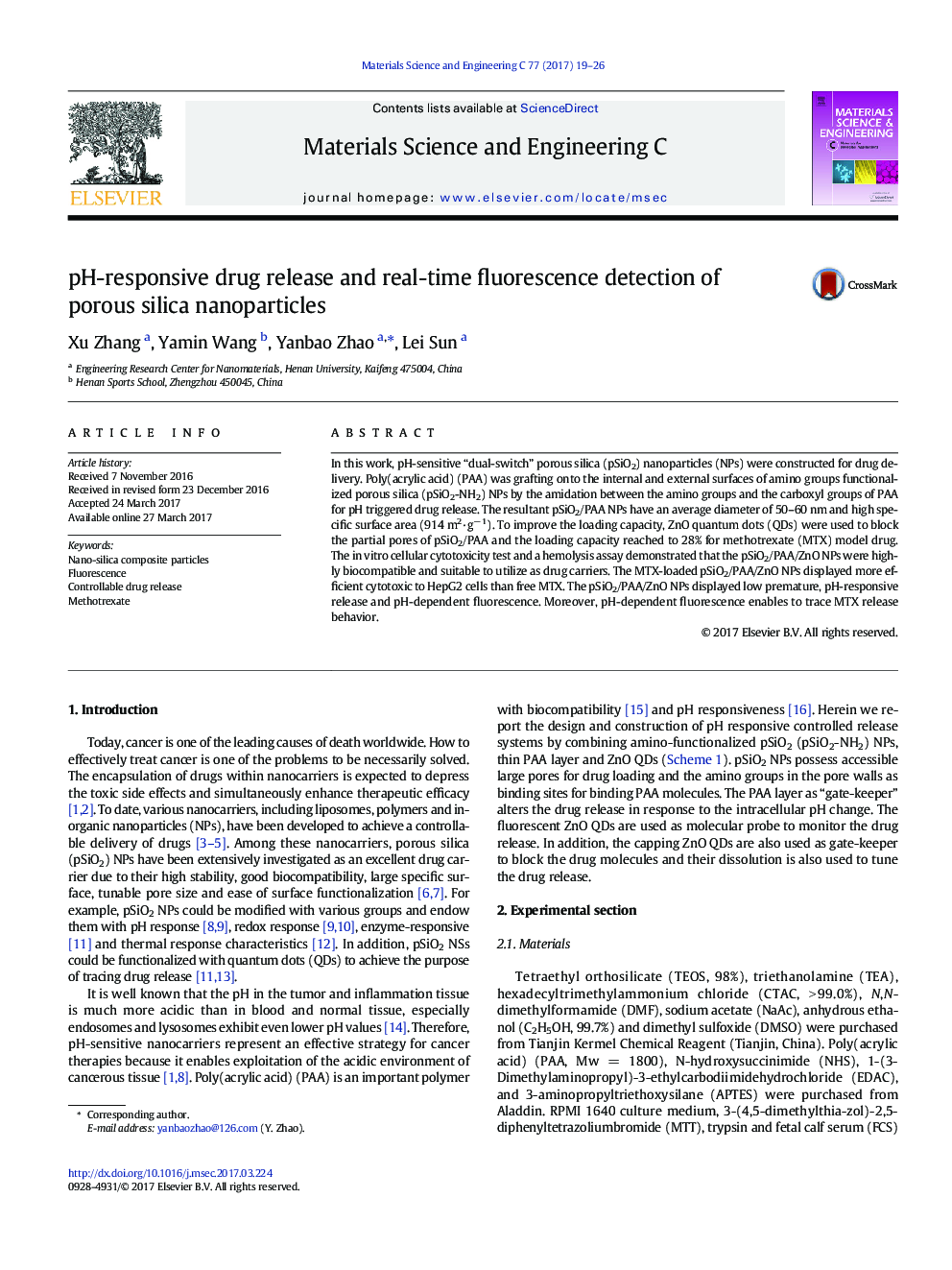| Article ID | Journal | Published Year | Pages | File Type |
|---|---|---|---|---|
| 5434495 | Materials Science and Engineering: C | 2017 | 8 Pages |
Highlightâ¢Porous silica/Poly(acrylic acid)/ZnO (pSiO2/PAA/ZnO) nanoparticles (NPs) were prepared.â¢The pSiO2/PAA/ZnO NPs have large specific surface area and high drug storage capacity.â¢The pSiO2/PAA/ZnO NPs as drug carriers are highly biocompatible.â¢The pSiO2/PAA/ZnO NPs display low premature and pH-responsive release.
In this work, pH-sensitive “dual-switch” porous silica (pSiO2) nanoparticles (NPs) were constructed for drug delivery. Poly(acrylic acid) (PAA) was grafting onto the internal and external surfaces of amino groups functionalized porous silica (pSiO2-NH2) NPs by the amidation between the amino groups and the carboxyl groups of PAA for pH triggered drug release. The resultant pSiO2/PAA NPs have an average diameter of 50-60 nm and high specific surface area (914 m2·gâ 1). To improve the loading capacity, ZnO quantum dots (QDs) were used to block the partial pores of pSiO2/PAA and the loading capacity reached to 28% for methotrexate (MTX) model drug. The in vitro cellular cytotoxicity test and a hemolysis assay demonstrated that the pSiO2/PAA/ZnO NPs were highly biocompatible and suitable to utilize as drug carriers. The MTX-loaded pSiO2/PAA/ZnO NPs displayed more efficient cytotoxic to HepG2 cells than free MTX. The pSiO2/PAA/ZnO NPs displayed low premature, pH-responsive release and pH-dependent fluorescence. Moreover, pH-dependent fluorescence enables to trace MTX release behavior.
